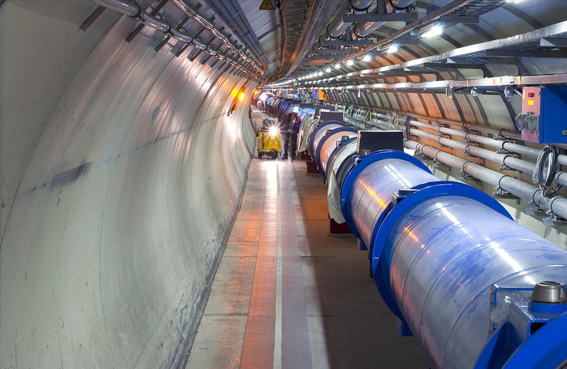CERN
The European Laboratory for Particle Physics (CERN) is located just outside Geneva, Switzerland and overlaps the border between France and Switzerland. It has a 27 kilometer circumference circular tunnel which houses the Large Electron-Positron Collider (LEP). Under development is another facility called the Large Hadron Collider which should produce proton-antiproton collisions in the energy range 10-14 TeV. This should enable it to produce a large number of top quarks and offers a chance of seeing the proposed Higgs particle.
The Super Proton Synchrotron (SPS) at CERN is one of the worlds largest protron synchrotrons, reaching energies of 450 GeV.
Another major facility at CERN is the Intersecting Storage Rings (ISR), the first proton-proton collider to be put into operation (1971). It had a maximum proton energy of 31 GeV per beam.
| Accelerators |
Particle concepts
Search for elementary particles

CERN
| HyperPhysics***** Quantum Physics | R Nave |

